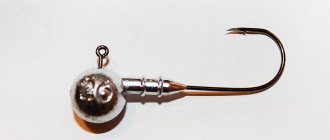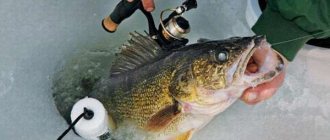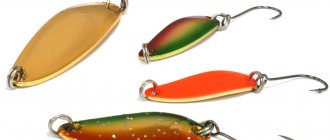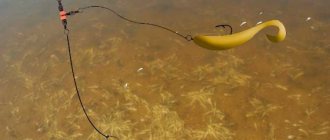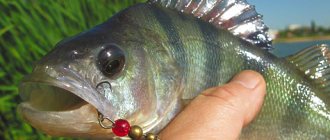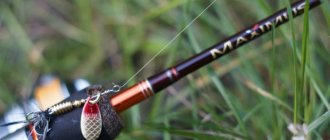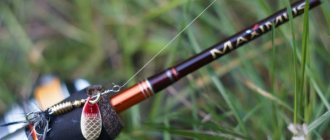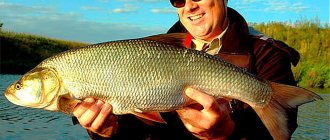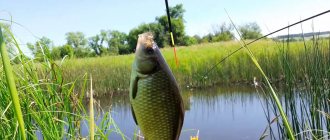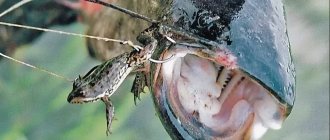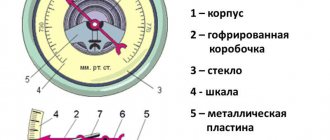Hunting a predator is always an exciting competition, generously seasoned with adrenaline and gushing emotions. This is why spinning fishing has so many fans among both sexes, all ages and social groups. And with the invention of silicone baits and the advent of jig fishing techniques, their number increased even more. Of course: even the most passive predator cannot resist the unique play of a soft silicone rod under the control of an experienced spinner!
Today we will look into the secrets of the popularity of this active fishing method. Naturally, fishing is mainly practice, but in this case, knowledge of some theoretical fundamentals is more important than ever. In this publication we will give recommendations on the choice of spinning rods, equipment elements, and baits. We will not ignore the main methods of wiring used in this method of fishing.
The essence of jig fishing
This method of fishing owes its name to choreography. Yes, don’t be surprised: it was named after the dance of British sailors. The fact is that during a classic retrieve, the bait moves along a stepwise trajectory, sometimes touching the bottom, and this movement is characterized by sharpness and abruptness. Well, just like in English dance!
This bait provides a rich catch even with a bad bite! More details This movement is ensured by the presence of a special silicone bait, weighed down with a metal weighting agent - a jig head (other baits are also used, but now we are talking about the classics of the genre). To ensure the necessary dynamics and control over the wiring, rigid forms equipped with inertia-free coils are used.
Jig fishing for predators is a fascinating activity, dynamic and adrenaline-fuelled, but requiring certain physical conditions and some skill. The army of its fans is growing year by year, largely due to the fact that the fishing technique is relatively simple and can be easily mastered on your own, the first time you go to a pond.
This fishing method is applicable in almost any conditions: both in still water and in currents of any speed, at any depth. The only obstacle may be the abundance of aquatic vegetation and cluttering of the reservoir with snags and driftwood. However, with the accumulation of experience, fishermen skillfully bypass these obstacles.
How to catch pike with wobblers?
Catching pike with wobblers and jig baits occupies a leading position in its popularity and effectiveness of spinning fishing.
Pike, unlike other fish, is not at all afraid of the Wobbler; it is attracted by the complex pirouettes of such bait.
It should be remembered that although pike prefers the active play of a wobbler, it is only at low speeds.
It is preferable to catch pike with floating wobblers when diving up to 2.5 meters. But wobblers with zero buoyancy (suspending) are also effective.
When fishing for Pike with Wobblers, 2 main movements are used: uniform, and slow, and Twitching.
Slow, uniform wiring is used using wobblers with low-frequency play, and is characterized by the fact that the wobbler can be moved so smoothly and slowly that not a single pike can resist such a bait.
When throwing a wobbler onto the water surface, reeling is carried out by slow rotation, but if the wobbler is floating, you must remember to lower the rod down to the top so that the bait remains at the desired depth when retrieving.
3 ways to improve your fish bite!
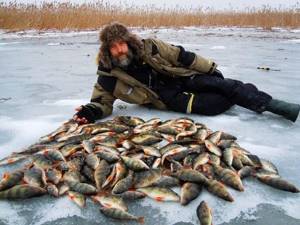
Over 15 years of active fishing, I have found many ways to improve the bite, and here are the most effective:
1. Bite activator . This pheromone additive attracts fish most strongly in cold and warm water. The Fish Hungry bite activator has proven itself to be excellent - Read more…
2. Tackle with increased sensitivity . You should first familiarize yourself with the features of using a particular type.
3. Pheromone baits . They attract the attention of fish, stimulate hunger and cause a schooling reflex, which allows you to collect a lot of fish in one place.
You can get the rest of the secrets of successful fishing for free by reading my other materials on the site.
3 ways to improve your fish bite!
Over 15 years of active fishing, I have found many ways to improve the bite, and here are the most effective:
1. Bite activator . This pheromone additive attracts fish most strongly in cold and warm water. The Fish Hungry bite activator has proven itself to be excellent - Read more…
2. Tackle with increased sensitivity . You should first familiarize yourself with the features of using a particular type.
3. Pheromone baits . They attract the attention of fish, stimulate hunger and cause a schooling reflex, which allows you to collect a lot of fish in one place.
You can get the rest of the secrets of successful fishing for free by reading my other materials on the site.
Twitching is a jerking technique of fishing with wobblers, achieved by jerking the rod with varying strength and amplitude. The movement of the bait becomes very diverse, which attracts such a predator as pike.
General description of the gear
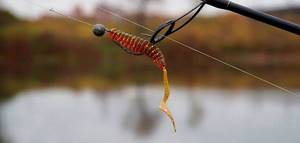
As mentioned above, we are dealing with an active method of fishing, which involves total control over the tackle at all stages: casting, retrieving, hooking, and landing fish. In this case, a spinning blank with certain characteristics is used, ensuring the “responsiveness” of the equipment to the slightest movement of the fisherman, as well as subtle transmission of the bite.
The rod is equipped with a reel with fishing line (more on this a little later). In this case, it is necessary to use a special artificial bait, usually a flexible “fish” made of silicone. By itself, it will not obey the movements of the rod (it is carried away by the current, has positive buoyancy), so it is given “workability” using a metal head, usually round in shape.
Jig fishing techniques are constantly evolving: new fishing lines adapted to certain conditions and corresponding equipment options are appearing. Installations usually use steel, titanium or fluorocarbon leaders. In the first case, the emphasis is on the strength of the equipment, in the second - on its inconspicuousness in the water, and the determining factor is the degree of activity of the fish. To catch most predators, regular and offset single hooks are used, but when hunting for trophy pike, it is better to give preference to a double or treble hook.
At the moment, the most popular types of equipment are:
- Texas . The equipment consists of silicone, a bullet weight, a single or offset hook and a limiter bead. It is most suitable for fishing in clogged and overgrown reservoirs;
- Caroline . This equipment provides freer movement of the silicone, which makes it most effective in shallow water and catching low-active predators. The Carolina rig is similar to the Texas rig, but involves mounting the leash through a swivel;
- Moscow . The “spreader”, most commonly known as a “retractable leader,” allows you to cast ultralight baits over long distances. Outwardly, it resembles a paternoster familiar to feederists with two leashes of different lengths (on one there is a sinker, on the other there is a bait with a hook);
- Drop shot . This installation is considered optimal for spot fishing. Unlike the above-mentioned option, a drop shot involves tying a hook with bait not on a separate leash, but simply at a considerable distance from the weight, which is attached to the end of the rig.
In addition to the main gear, it is advisable to take a set of spare equipment for fishing. A landing net is useful for catching trophy specimens (in coastal thickets, without it, it’s easy to miss even small prey), as well as a special extractor for removing the hook (if you don’t have one, you can use a knife).
Rod selection
A spinning blank is the main element of the gear, so you need to approach its choice thoughtfully, without falling into dubious savings: using a cheap, low-quality rod is guaranteed to have a negative impact on your fishing performance and your comfort.
The first characteristic is
lightness and quality of execution .
In this case, blanks made of composite materials, carbon fiber or graphite are preferred. It is important to have a comfortable and grippy handle made of natural cork. Pay attention to the quality of the guide rings: they must be absolutely even and smooth, securely fastened to the form. The reel rings must provide a rigid fastening, without the slightest play. And now about the technical characteristics . The choice of length depends on the fishing conditions. There is a simple rule in jig fishing: every 30 cm of blank length increases the casting distance by 5 meters. Therefore, when fishing from the shore, spinning rods with a length of 2.5-3.3 m are usually used: casting range is important here. If fishing is carried out from coastal thickets, it is advisable to choose a shorter rod, otherwise you can leave the equipment on the sedge. When using a boat, the length of the form does not matter much, so you can get by with an extremely short one and a half meter version.
The next characteristic is test . Its choice depends on the weight of the bait, as well as fishing conditions (rods with a higher test are used in the current). The main test classes for jig are ultralight (extremely light), small and medium. If we are talking about choosing a universal option for a beginner, it is better to focus on the small (light) class of 5-12 grams.
The sensitivity of the rod determines the speed at which the bait reacts to the movements of the angler. In this case, fast (and sometimes ultra-fast) action forms are optimal, providing the most realistic animation of the bait, as well as a high speed of transmission of the bite to the rod.
Coil
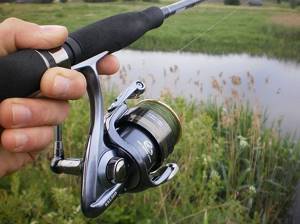
Some sports fishermen use inertial reels without any technical bells and whistles, but this is rather the exception, dictated by personal preference. In most cases, high-quality and durable spinning reels . The best option would be a lightweight model made of duralumin with mechanisms made of high-strength alloys. The most preferable are models with cone-shaped spools: they perform best on wires. If we talk about the brand, then this is a matter of taste: for a beginner, any quality reel will do.
The capacity of the spool is determined by the test of the rod: ultralight - 1000, small - 2000, medium - 3000. You should pay attention to the presence of a friction brake of sufficient sensitivity: when fishing for trophy specimens with a jig, it greatly simplifies the process of fishing. However, you need to remember: correct brake settings are also extremely important.
There is no need to chase expensive multiplier models: they make the rod very heavy, and there is no particular need to use them in fresh water. Well, perhaps a trophy catfish weighing about thirty kilograms will be tempted by the bait, but this should rather be classified as a miracle.
fishing line
You shouldn’t skimp when choosing a fishing line: stick to products from well-known fishing brands. The cheapest is traditional monofilament - the first fishing line made from artificial polymers to appear. At short distances, at first, high-quality monofilament fishing line performs well, but this is far from an ideal option. The fact is that even in high-quality performance it has a high stretch coefficient, especially when wet. For fishing, this may be good, but for retrieving and hooking, it’s not very good.
In the vast majority of cases, jig fishing enthusiasts use braided line . Yes, it is not so durable, is subject to abrasion with frequent use, and costs much more than monofilament. However, it has a minimal stretch coefficient, which ensures ideal transfer of manipulations during retrieving, and therefore realistic animation of the bait. This makes it easier to retrieve and increases the attractiveness of the bait for a predator. When using braid, the bite is instantly transmitted to the rod, which is especially important at long distances.
The diameter of the cord is in direct proportion to the test of the rod, the capacity of the spool and the weight of the bait (varies in the range of 0.06-0.2 mm). The color scheme is not of fundamental importance. However, at first it is better to choose a braided color that contrasts with the water: this makes it easier to control the wiring.
Why is jig good?
Why is jig good?
When spinning fishing, it is, in principle, not canceled all year round, and the beginning of autumn, when pike bite wonderfully, is also no exception. In the first weeks of September, the “Russian style” of jig is especially interesting, when the bait falls to the bottom, and after waiting a couple of seconds, you begin to reel it in 3-4 turns, quickly rotating the reel and immediately stopping, holding the rod “at 11 o’clock” .
This type of wiring will provide an interesting bait play for the pike. By the way, silicone fish, live bait or a bunch of worms can act as bait. At the same time, it is important to take sinkers that are not too heavy: in practice, we have seen that 10-12 gram ones work very well, while 18 gram ones reduce the total number of bites by 2.5-3 times.
Attention, at the beginning of autumn it is quite possible to catch a large pike with a “Russian” jig, a specimen weighing from 3-4 kg. Especially if you have patience and choose a fairly bright silicone bait, the action of which will be noticeable not only to the predator, but also to you, and it can be easily carried even through snags.
Types of jig baits
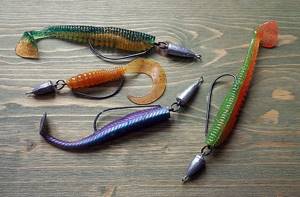
The classics of jig fishing involve the use of soft silicone baits with special heads: in fact, their invention determined the appearance of this method. For the most part, they have the generalized shape of a small fish (or other potential prey) and can appear in different color and even taste and olfactory variants. This is, so to speak, a universal option for hunting any predator in various fishing conditions. Specialization is achieved through various montages, as discussed above.
However, over time, anglers realized that jig fishing does not live by the classics alone. For example, using foam baits increases the chance of catching pike perch. In this case, “foam rubber” of various colors and configurations is used, and fishermen often make them with their own hands in accordance with personal preferences.
Fishing is also possible using various types of spinners with various loading options. These are already sophistications that are used for targeted catching, for example, asp or catfish: at first, it makes no sense to master a jig with a spoon.
In all cases, both the correct choice of bait and wiring with the most realistic and tempting animation for a predator are extremely important.
Classic silicones
As mentioned above, the appearance of soft silicone baits gave rise to the very principle of jig fishing. Now a great variety of them have appeared, in all sorts of the most puzzling versions, imitating all kinds of aquatic life, which is the food source not only for predatory fish, but also for some peaceful fish. They can be divided into three broad groups:
- Vibrotails . Lures of this type are shaped like fish and are distinguished by a rather short “tail” that is flattened in the frontal projection, the movements of which are dictated by the motor movements of the “body”.
- Twister . But this artificial bait’s “tail” has a fairly decent size, and is also twisted with a screw or funnel. It works independently, providing the silicone with movements similar to the behavior of a wounded fish.
- Other silicones . This group includes baits that imitate all kinds of insects, worms, crustaceans, larvae - in a word, any delicacies for fish. Such baits sometimes catch large bream, carp or crucian carp.
Silicones are available in various color variations, from those close to natural to the most fantastic. In this case, the silicone can contain sparkles or a fluorescent composition, which not only increases the attractiveness of the bait for a predator, but allows you to control the wiring in the dark. An additional bonus may be the addition of an attractant: fishermen usually call this silicone “edible rubber.”
The size of the bait is selected depending on the size of the intended prey. Models are available for sale from 5 millimeters to 20 centimeters in length. For perch they usually put bait up to 5 cm long, for pike - up to 10. Other sizes are not so popular and are used mainly in sports jig fishing.
Other types of baits
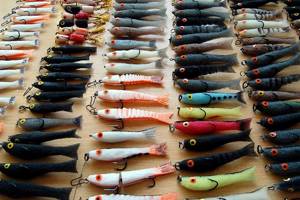
Jig fishing may also involve the use of other baits, but these are rather exotic, used in trophy fishing for a specific predator. Beginners do not necessarily need to have such baits in their arsenal, but it will not hurt to have a certain understanding of them.
Now in order:
- Turntables . Rotating spoons for jigging differ from the classic versions by an additional weight in the front part of the mount (it is usually made in the shape of a fish head). The “body” is the spinner itself, and the tail is the “feather” that disguises the hooks. The main trophies are pike, humpback perch, and channel catfish.
- Oscillators . Spoons of this type are used for jigging much less frequently: in the fall - for trophy pike, in the spring in warm regions - for catfish. The most common is direct installation of the main cord knot to the vibrator ring.
- Foam rubber . Previously, exclusively homemade versions were used (they were simply cut out with scissors, painted and equipped with hooks), but now factory models of various colors have appeared on sale. Foam rubbers are the target bait for pike perch: this predator reacts especially vividly to clumsy, but distinct and sharp animation.
Fishing with jigs and wobblers
Alternating methods and baits brings the best results to the spinning angler. The tactics for searching and catching a predator are simple and well-known: first we tap the bottom with a jig and determine the relief pattern. Then we catch with a wobbler everything that was not caught on the jig.
What kind of fish should I catch?
In an ordinary reservoir or lake, most of the perch are small. You can catch it with small jigs, spinners, wobblers... Usually there are no problems in catching it, due to its large number and gregariousness. This fish is not difficult to track, including by the behavior of small fish.
But very often catching small bass is not of interest to the spinning angler. Another thing is a humpback fish weighing 1 kg. True, catching such specimens is rare; you can’t count on a stable bite from a large perch.
Likewise, pike perch cannot be considered an object of constant fishing. It’s possible to get to promising pike-perch spots, but it’s clearly not worth thinking that tomorrow the pike-perch will delight you in the same place.
What remains is the pike. It is numerous and its catching is well predicted.
Which predator is caught the most?
If you do a survey on a caught predator weighing 1 kg, it turns out that the pike is far ahead by a large margin. Then pike perch and perch. Chub can be traced. Ide and asp - less common.
But even in the 3-kilogram category, pike wins.
And at 0.5 kg, squirrels are also ahead of large perch.
In general, if a spinning fisherman wants not to be left without a catch, then he needs to focus primarily on pike. And consider pike perch a serious bonus and reward “for work.” Gorbachev is an even more valuable medal...
Asp is caught less frequently, but catching it is very interesting. It is important to sneak up on the striking asp in the vastness of the water, so that he simply allows it. Otherwise, it will be as always - 5 meters short of the fish fight, no matter how close you get, it’s as if you are walking towards the edge of the horizon...
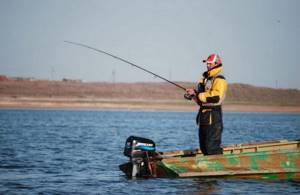
Where do we fish?
Finding fish in the open spaces is both very difficult and simple at the same time. Just for those who have a “trained eye” and experience.
Any fold of the relief, unevenness of the shore, or a forest jutting out into a pond can speak volumes. Tracking the external signs of a reservoir is a primary task when identifying promising locations.
The second is watching the fish. The fry quite often jumps out to escape the perch. And a simple accumulation of small fish, especially near thickets, is already a sufficient argument for fishing not so much in the center of the school, but also along its perimeter at a distance of 20 - 40 meters. Pike perch and pike often simply graze schools of roach and bleak, moving after them and staying at a decent distance from the bottom.
Bird watching and working with an echo sounder
If even one seagull constantly attacks one place, then this already indicates a possible cauldron has arisen. And if there are a lot of seagulls having a feast, then it is worth catching not only small-medium perches in the cauldron, but also keeping the perimeter of the cauldron with a large bait, in search of a large predator that stands a little deeper and further away and grazes the perch.
An echo sounder, of course, simplifies the exploration of a body of water. Any snag, an outcropping of stone, the boundaries of something (this means a change), any non-standard, different in any way from the flat picture of the bottom, is subject to examination with a jig.
But it makes sense to do this if the search itself with the echo sounder was performed correctly, i.e. extremely secretive and quiet. You can be sure that walking on a motor drives away a large predator or, at least, changes its reflexes, bringing caution to the fore. makes him hide. Therefore, it is recommended to go at minimum speed, and often by inertia with the engine turned off. You need to approach a known catching point as quietly as possible and leave the same way - not quietly, but even mysteriously. You should not overload the point with your pressure, otherwise the fish will stop being caught in a couple of days, so the place will now not differ from the pressed pier.
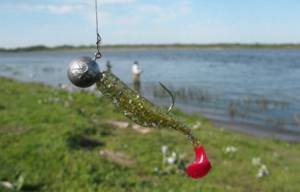
First with a jig, then with wobblers
This tactic, among other things, also saves wobblers on hooks. In order not to risk your bait in vain in the windfalls (including grass), you can explore the place with a jig, determine the boundaries of safe fishing, the prospect, and then be there.
Usually at a point, fishing is done around the boat in all promising directions. As a result of careful work of the jig, a picture of the bottom will emerge by itself, and the location of possible hooks, and places where there are bites, gatherings, and therefore under-fishing.
After the picture becomes clear, it is easy to select a wobbler of the required buoyancy and action and make it catch in at least two directions:
- where there were bites, and especially gatherings. Poor catchability of an offset hook should be corrected immediately with wobbler tees.
- along the boundaries of obstacles, where there is a guarantee of non-snag - especially promising points where a sluggish pike can pass a jig or spoon and, perhaps, react to a wobbler.
As practice shows, this “maybe” is enough to consider the jig-wobbler combination the best solution in tactical terms.
Moreover, for such fishing you don’t always need to have a whole suitcase of wobblers with you. Up to a dozen working models of minnows and crankbaits are enough; perhaps light swimbaits from the mini-jerk category (up to 40 grams) will also help out. In any case, changing the style, sound wave, in the same place can lead to unexpected discoveries, especially in relation to large pike if you also work with a jerk.
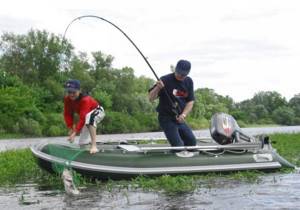
Rod, equipment
For jigging, a spinning rod with a length of about 2.6 -2.7 meters is more convenient. It is more convenient to jig in the wilds with a relatively long rod, and the hooks are reduced. For wobblers, a model with a length of 2.1 meters is suitable.
In any case, these should be high-quality rods with extreme sensitivity. Only transferring the features of the game into the hand and the audibility of the bait are the key to success in fishing with jigs and wobblers. Touching, avoiding obstacles, creating the necessary pauses, etc. - all this depends primarily on whether the angler knows what is happening with his bait. The second point is that the form should not be flimsy. You need to confidently hatch a 3-kg pike, no matter what its tricks are. Especially near snags, so as not to let her dive there. Only hard, powerful spinning rod.
The usual test for this kind of fishing is 10 – 40 grams.
The cord should not hide and sail with its roughness. In clean areas, 12 lb is sufficient. And where you need to wade through the thickets, I’ll stick to something confident - from 15 lb. By the way, for use among thickets it is better to use a four-core cord than an eight-core one.
On wobblers, hooks usually do not cause any complaints in terms of catching fish, but they can be changed to change the noise-attractive characteristics of the wobbler or to change buoyancy.
For jigging on pike, it is better to choose offset hooks with a long shank and a simple straight bend. They hook fish better than other options. Size for pike No. 3 - No. 5/0, oddly enough, but it is better if the hook is turned in a horizontal plane relative to the position of the jig head...
Choosing a Jig Head
Silicone itself will not provide animation; it requires the inclusion of a special weight in the installation - a jig head. In the classic version, it is combined with a hook, but there are also independent loading options, used mainly for spaced installation, for example, the Moscow one mentioned above.
The key point in choosing it is the mass of the silicone itself, as well as the fishing conditions (wind, current, and so on). The smallest jig heads weighing from one to four grams are designed for catching small predators (for example, grass perch) using silicone up to 5 cm long. Naturally, the thinnest cord and ultra-light blank are required.
The most common and versatile are small and medium class heads weighing 5-20 . You should have heads of different weights in your arsenal so that you can select them according to fishing conditions. To select the optimal option, you can proceed from the rule of 7 seconds - this is the ideal time for the bait to sink to the bottom. Less time means taking a lighter head, more time means taking a heavier one.
The most common heads are spherical in shape., but there are other options. For example, flat heads of the “iron” are characterized by greater cross-country ability and are used for fishing in conditions of a rough bottom. Rugby heads have an elongated shape and do not fall to the side, which increases the chances of a productive hookup, however, when used on a rocky bottom, they often get stuck.
Selection of baits
The best lures for pike in the spring are still artificial; a predator that has not yet recovered from winter will not always respond to live bait. Based on this, you can create a rating that will tell you what is best to use.
Popular types of artificial baits
It is very easy to get confused among the variety presented in fishing tackle stores. A beginner will not be able to decide exactly what he needs. In the spring, it is preferable to catch pike with a jig, but which silicone should you give preference to? We will look for the answer to this question together.
It is better to choose jig baits for predators from the edible series, but the color will depend on the reservoir and the turbidity of the water in it:
- pike in rivers with muddy water will pay attention to silicone of an elongated shape and acidic color; the best option would be a twister, a worm, an artificial dragonfly larva;
- in reservoirs with cleaner water, purple silicone, machine oil, caramel, dark greens with glitter will work well;
- Shallow streams with a slight current and translucent water are perfectly shaded by Tioga-type silicone from Lucky John in a milky color and a transparent model with glitter.
Reapers are also good options; Kopito Relax has proven itself, and the colors chosen are bright, acidic with glitter. Mans is also popular; fishing for pike with a jig in May is never complete without this bait.
Rattlins with poppers will also work well; they are chosen in bright colors and with dots on the sides. Small rotating spoons with bright flies on the tees and a colored petal will perfectly attract the attention of any predator in the pond. As for the spinner, preference should be given to micro-variants with a single hook. It is not at all necessary to look for acidic colors; gold and silver can lure pike just as well.
Weak artificial baits
In the spring, small-sized baits work better; even a large predator after wintering is unlikely to pursue a silicone fish larger than three inches. It is not advisable to choose large shakers, fishers, vibrotails, twisters; this type of bait will work well from the shore in the fall.
A spoon with a large blade or a spinner over 9 g will also not be able to properly attract the attention of the pike; most likely the predator will hide and wait for smaller prey.
Minou-type wobblers over 70 mm can definitely only scare away fish; they are not included in the top spring baits .
Fishing with live bait
In the spring, it is best to catch pike on a jig, but you should not forget about the live bait method. This type of tackle is assembled from a stiffer fishing rod, and it turns out to be bottom fishing. A bite indicator will be a sagging float or regular tackle under a float with a sinker. This method is most effective for night fishing.
Important! It is best to take small fish from the same reservoir as bait.
The most efficient wiring
Fishing begins with casting the tackle to the maximum possible distance under the given conditions. When the bait reaches the bottom (this can be seen by the sagging of the cord), the most interesting part begins: retrieving.
There are many types of retrieves that provide optimal bait animation for specific fishing conditions. When jig fishing, the following wiring is most often used:
- Russian classics . This option involves working exclusively with a coil. When the bait has reached the bottom, we make a couple of turns, lifting it and moving it forward. This is followed by a pause of a couple of seconds and the cycle is repeated.
- Short step . This method is similar to the previous one, but provides a shorter “step”. Only one revolution of the coil is made, but at a faster rhythm.
- American stepped . In this version (more labor-intensive), the gradation is ensured by working with a fishing rod. Rewinding is carried out after significant sagging of the cord.
- To be demolished . This method is applied downstream. A swing of the rod ensures that the bait is lifted from the bottom, and it moves with the flow.
- Aggressive . An option that involves sharp swings of the rod with pauses for the bait to return to the bottom. The sagging of the cord is eliminated by winding the reel.
- Uniform . Ideal for twister. It is carried out by wiring the coil without jerks or pauses.
- Pendulum . A complex retrieve, usually combined with the use of a flat jig head. It is necessary to constantly work the rod with a small amplitude up and down while simultaneously reeling in the sagging cord.
- Dotted line . An option used by professionals when jig fishing for a specific predator – pike perch. The nozzle practically drags along the bottom soil, which is ensured by sharp micro-movements of the rod with an amplitude of up to ten centimeters.
After the predator has swallowed the bait, the stage of hooking and landing the fish follows. In this case, reasonable persistence should be observed, carefully working with the rod and reel. If the prey is large, it is highly advisable to use a landing net in the end. We wish you to need this piece of equipment as often as possible. In a word, more enviable trophies for you!
Fishermen wonder why I’m biting and they’re not?
I’m revealing a secret just for you: it’s all about the miracle bait! More details
